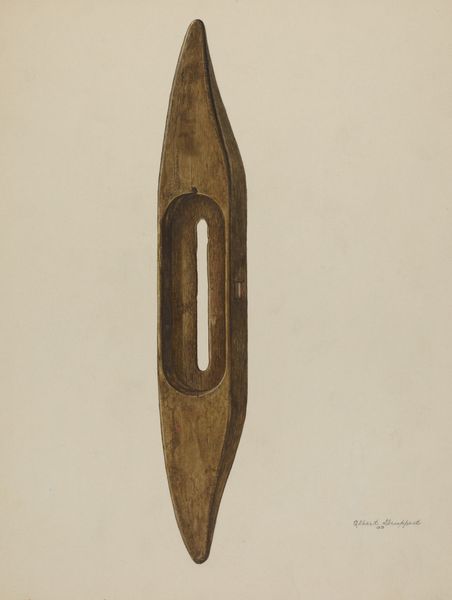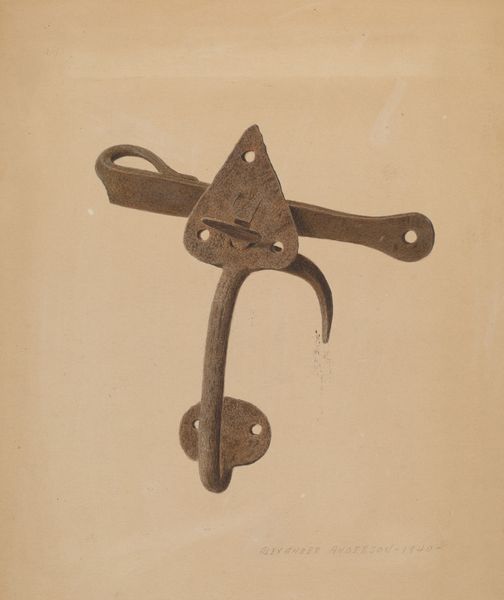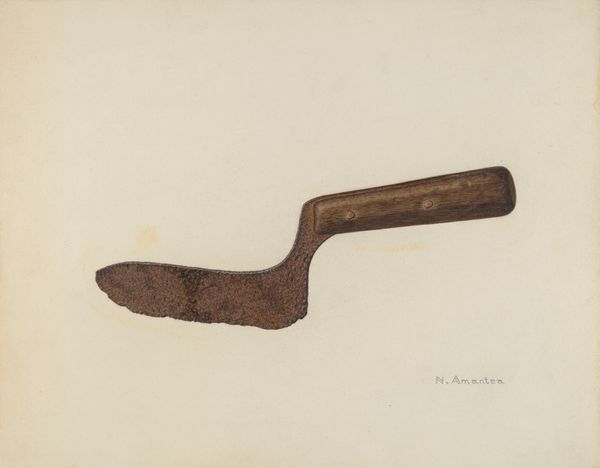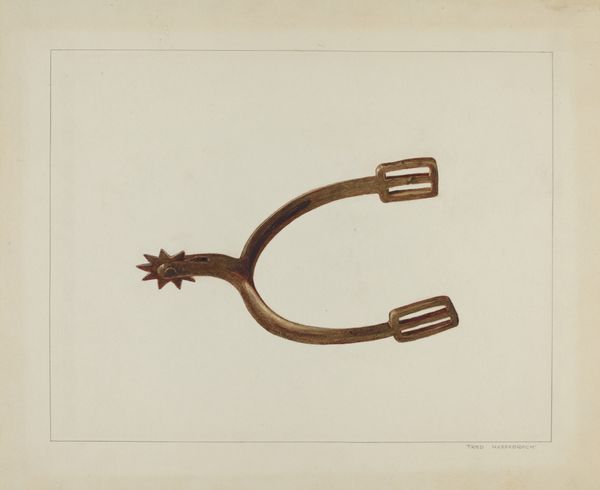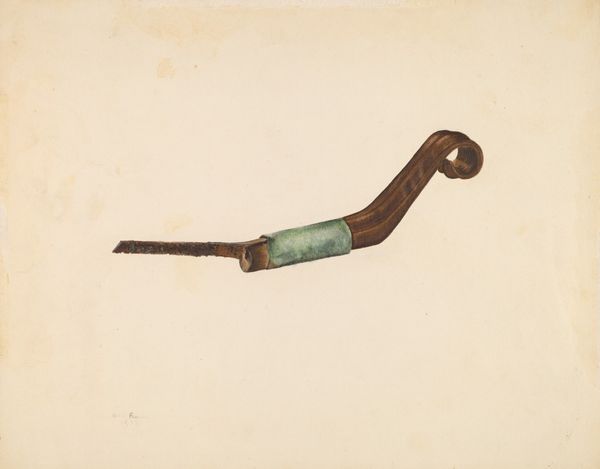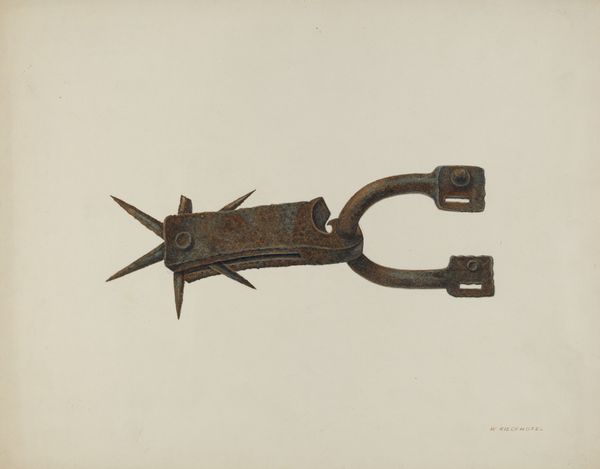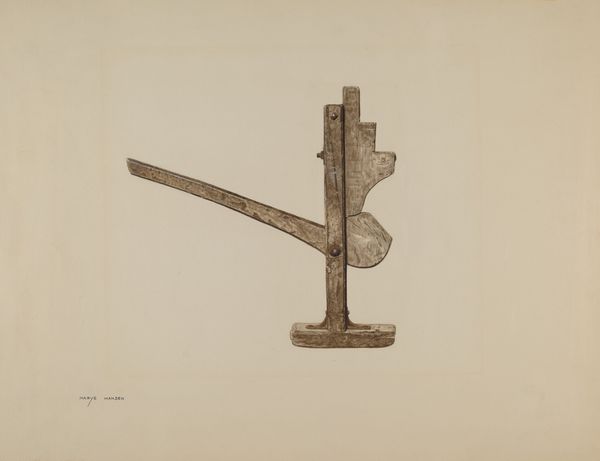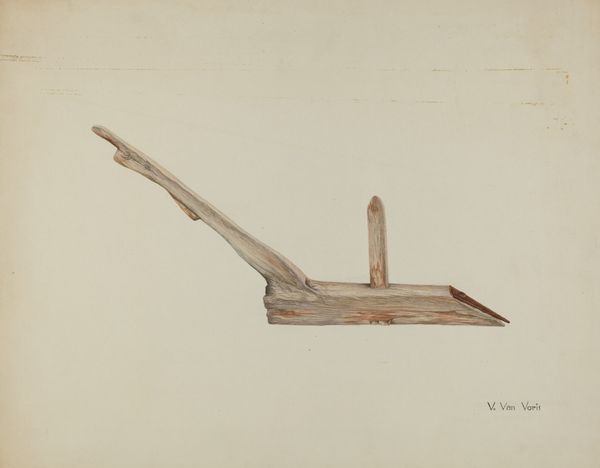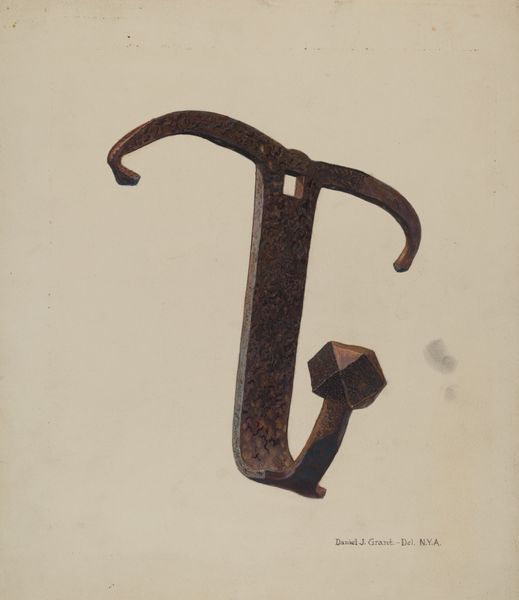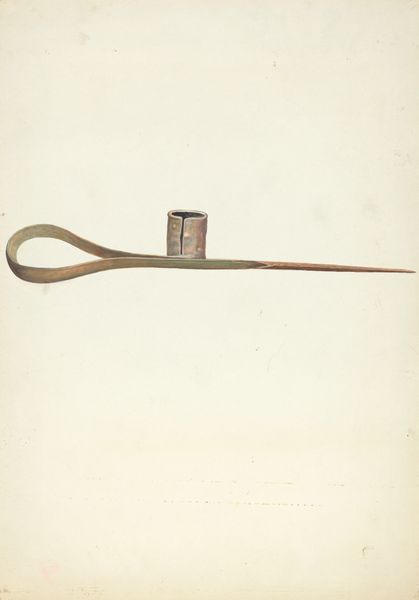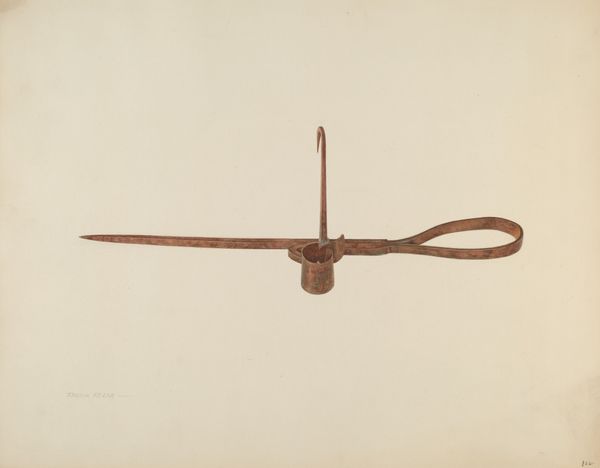
watercolor
#
watercolor
#
realism
Dimensions: overall: 22.9 x 27.9 cm (9 x 11 in.) Original IAD Object: 8" long
Copyright: National Gallery of Art: CC0 1.0
Curator: I’m immediately struck by the starkness of this watercolor painting; the subject, isolated against a plain background, conveys a certain severity. Editor: Indeed. Here we have Fred Hassebrock's "Brass Bullet Mold," created around 1940. The piece showcases a tool central to the means of production of projectiles. This is hardly the overt artistry we often see from this period. Curator: Yes, the rendering is remarkably precise. One could even describe it as clinical, which perhaps reflects the detached process of fashioning instruments of conflict. Yet the brass gleams slightly—could the material hold symbolic value related to wealth, industry, or maybe some sort of aspiration? Editor: I see your point. Consider, though, the function of the mold itself. It represents reproducibility and the commodification of violence. Each perfectly formed bullet produced from this very tool. What larger implications are we presented regarding industrialized conflict, and its transformation through material means? Curator: A potent observation, to be sure. Also, the careful way the artist has depicted it; not glorifying it as much documenting it, elevates it beyond the singular tool. What of Hassebrock's choice to isolate it in watercolor, as opposed to a medium historically associated with 'high art?' Editor: Watercolor speaks to a craft aesthetic. Its ready availability made art tools democratic and accessibly. The subject is given equal attention to its method of depiction. The choice to render something of violent capacity in this accessible way complicates our emotional engagement. Curator: Certainly, we grapple with that unease today. But is there an implication, too, that art must implicate itself, no matter the moral discomfort? That a single symbol, rendered painstakingly, can carry centuries of loaded associations? Editor: It suggests that the power of art doesn't necessarily lie in its grand gestures but rather in the attentive framing of objects and materials of all sorts. And those connections help to define both object and experience in unique ways. Curator: An unexpectedly insightful encounter with this tool, its manufacture, and what these processes may implicate culturally. Editor: Agreed, a painting to meditate upon, both for its beauty and its uncomfortable implications regarding material and meaning.
Comments
No comments
Be the first to comment and join the conversation on the ultimate creative platform.
